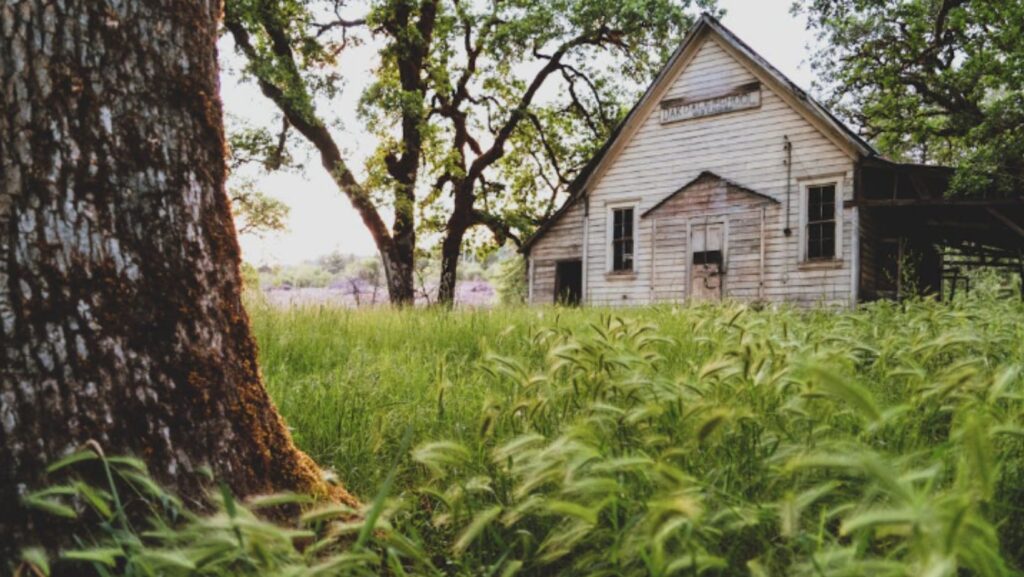Pole barns offer a versatile, cost-effective building solution ideal for various applications. This guide covers everything you need to know about designing and constructing the pole barn of your dreams. Read on to learn what defines these structures, their common uses, key advantages and design considerations, and the benefits of collaborating with a professional pole barn designer who can bring visions matching needs and budgets to life.
Table of Contents
ToggleWhat is a Pole Barn?
Pole barns are large detached post-frame structures typically featuring thick wooden posts or metal poles buried deep into the ground to serve as support beams for the walls and roof. The simplistic method of using poles versus poured concrete foundations contributes to quicker, more affordable construction costs.
Key Features of Pole Barns
Defining characteristics include:
Post-Frame Construction: Pole spacing forms the structural skeleton, which is later infilled with wall framing/sheeting. Roofs also mount directly atop posts using purlins running perpendicular to roof lines rather than conventional rafters.
Versatile Design: Easily customized with doors, windows, insulation, electrical, etc., and tailored for usage from open livestock sheltering to enclosed workshop finishes.
Cost-Effective: Using poles as foundations eliminates expensive concrete pouring, and modular metal builds are assembled faster, keeping labor down through efficient steps.
Quick Construction: With fewer components to assemble, it means build completion in weeks once permitting approvals finalize rather than months through elaborate wood or masonry projects exposed and awaiting sequential trade task completion.
Common Uses for Pole Barns
Serving diverse functions, pole barns excel housing:
Agricultural Storage: Conveniently securely stores livestock supplies, hay/feed, and farming equipment together when not in use.
Home Workshops: Offer protection from weather and ample space to pursue woodworking, mechanical repairs, and other hobby interests, as well as a flexible room that is best kept separate from living quarters.
Garages and Vehicle Storage: Accommodate parking cars, trucks, boats, ATVs, and other recreational vehicles, especially those needing charging stations or maintenance accessibilities.
Livestock Shelters: Sturdy structures with stellar ventilation properties house horses, cows, and other livestock that need enclosure options that are safe from harsh elements or predators during off-pasture resting periods.

Residential Living Spaces: Some choose to convert sizable pole barns into permanent rustic-style tiny home dwellings, taking advantage of the affordability and layout flexibility these simplistic builds allow.
Advantages of Choosing a Pole Barn
Reasons for selecting pole barns include:
Cost-Effectiveness: The efficient structural technique of using buried wooden posts for foundations eliminates expensive concrete pouring, making construction at least 30% cheaper per square footage than traditional builds.
Durability: With posts seated deep in the ground, buildings withstand northern winter snow loads and southern hurricane gales better than basic post-frame structures anchored less substantially through slab foundations.
Flexibility: Easily customized and aligned with evolving property needs, unlike permanent layouts restricting multipurpose functionality limits. Great for phased projects!
Energy Efficiency: Tall sloped ceilings and abundant natural light infiltration inherently promote air circulation. Further climate control enhancements like insulation and ventilation additions effortlessly tailor interiors for comfortable environments.
Rapid Construction: Concrete curing downtimes are avoided by allowing build completion within weeks once permitting approvals are finalized rather than months through elaborate wood or masonry structures.
Key Considerations When Designing a Pole Barn
Optimizing your structure means factoring:
Purpose of the Barn: From wide-open basic coverings to fully sealed partitions, defining intended functions determines necessary amenities suiting goals from the start.
Size and Dimensions: Footprints accommodate everything stored, from vehicles to livestock, while allowing ample human and equipment mobility clearances without feeling cramped. Measure twice!
Location: Graded flat spots meeting zoning setbacks for outbuildings need factoring sunlight, views, access paths, and electrical routing feasibilities impacting layout possibilities.
Materials: Metal roofing and lumber sheathing keep costs low for budget-conscious builds. Or upgrade insulation, siding durability, and high-performance finishes for refined workshops or accessory dwelling needs.
Doors and Windows: Sufficient entrances allowing human and equipment access should align to wind directions for weather protection as desired. Window placement balances lighting, views, and ventilation.
Insulation and Ventilation: Unfinished buildings expose occupants, but installing climate-moderating insulation, functioning windows/doors, and electrical luxuries refine bare shells into specialized spaces for year-round usability.
Foundation: Most opt for simplified wooden post hole digging versus extensive concrete slab pouring, enabling homeowners to tackle builds themselves without heavy machinery requirements or contractual crews necessitated.
Working with a Pole Barn Designer
Specialist designers simplify success in executing intricate structural plans by:
Expertise and Experience: They understand region-specific climate and zoning limitations that residential contractors may overlook, maximizing durable, customizable outcomes beyond DIY knowledge gaps.
Customization: Articulate envisioned aesthetics like rustic barn wood siding or refined climate-controlled workshops, and they engineer tailored solutions that maximize budgets through value engineering without sacrificing personal touches.
Project Management: Architectural drawings, council submittals, and licensed builder coordination get juggling multiple vendor relationships seamlessly on your behalf, preventing frustration from holding up construction milestones.
Cost Efficiency: They help balance investment decisions like insulation upgrades against long-term heating and cooling costs, determining ideal intersection points and maximizing functional quality for the dollar.
Popular Pole Barn Design Trends
Increasingly popular options include:

Barndominiums: Converting oversized pole barns into permanent luxury dwellings merges industrial warehouse shells with cozy interior finishes for unique live/work lifestyles.
Rustic and Modern Aesthetics: Matching beloved weathered barn wood textures with sleek steels and concretes blends eye-catching architecture organically into surroundings.
Sustainable Design: Solar power hookups, rainwater harvesting, and strategic window placements reduce environmental impact.
Multipurpose Spaces: Flexible layouts allow multiphase customization, sustaining compatibility housing vehicles, workshops, and gyms, accommodating shifting priorities.
High-Tech Features: Enjoy touchscreen climate controls, electric doors, WiFi-connected cameras, and audiovisual amenities operated through apps sustaining comfort/convenience.
Conclusion
Thanks to simplified construction techniques and layout flexibility sustaining personalized customization over evolving years, unlike fixed designs limiting singular functions in the long run, pole barns sustain endless potential bounded solely by imagination once fundamental protections from elements get established first. Construction investments pay dividends through years of invaluable covered spaces accommodating purposes enriching country living beyond initial project intents. Start building the foundation, stabilizing cherished assets from risks posed by external threats by breaking ground on pole barns, and delivering reliable refuge today.





